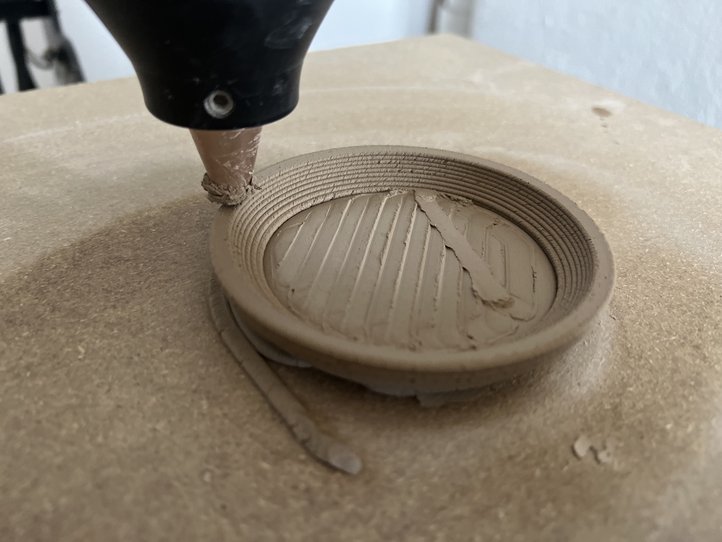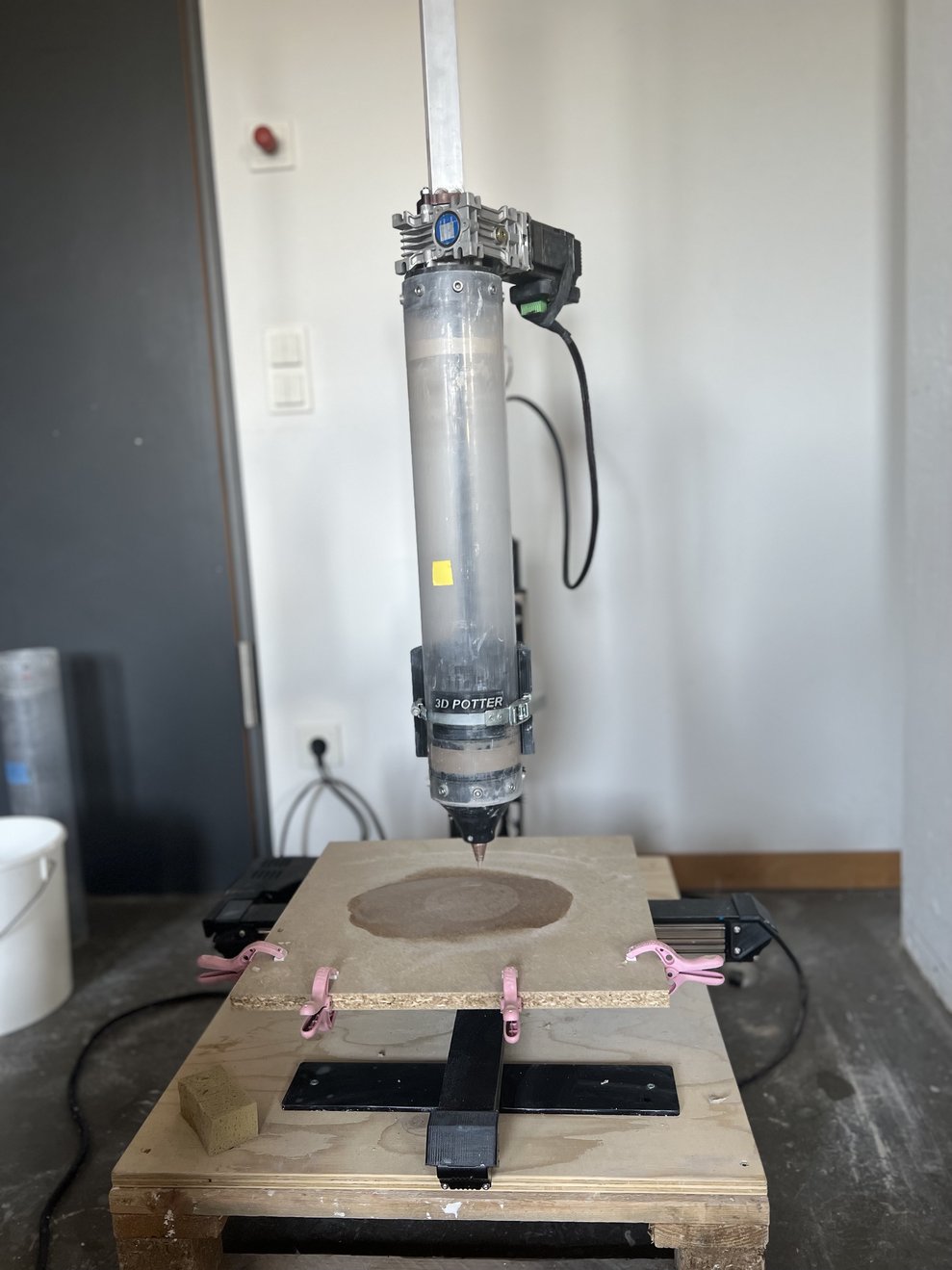Will the potter's wheel be phased out? Do modern ceramists no longer work with their fingers in the clay? Is one of the world's oldest handicrafts coming to an end? “No,” Ute Fischer replies to questions regarding the new 3D Potter-Bot 10 Pro in room 1.15.030. She hast studied fine arts at the HfK, has managed the ceramics workshop since 2003 and has added the 3D clay printer to her range of services for students. It does not replace traditional workmanship, but complements it, Fischer explains, since objects can be mass-produced in endless and identical quantities. Normal photos of objects to be printed can be converted into 3D templates by a computer program. Real models can be scanned in accordingly, or models can be created with CAD software such as “Grashopper”. Programs such as “Cura” then assist as an interface between the computer and the printer to convert the desired geometry into driving commands. Fischer emphasises that the printer is only a tool for giving material form to the product of the creative artist's imagination.
The advantage of printing clay: you need relatively little previous knowledge of ceramics and, above all, little practical experience with the material. One is therefore much more free in designing and can realise more complex structures, as well as angles, corners, curves and ornaments that are much cleaner than ones crafted on a turntable or by shaping clay with bare hands. The device can also print spouts and handles. Many use printing sheets as a design tool. This approach to pottery is a “completely new skill” for many students, according to Fischer. Some are just better at working clay the analog way, others work better with computer programs. Something as delicate as a DNA double helix has already been printed. “But the device also has some kinks,” says Fischer. In the event of a mistake, only spaghetti would be extruded, thin sausages of clay that do not stick together.
The 3D Potter-Bot 10 Pro is made by the US company 3D Potter, Inc., and listed today for $6,950. The HfK bought our machine in early 2022 and assembled it in September of that year. Based on a browser, it can also be controlled via smartphone. Sculptures, objects and hollow vessels measuring up to 50 centimetres in height can be made on a plate measuring 38 by 38 centimetres. Seven kilos of freshly kneaded clay fit into the printer cartridge. The material has to be a little bit softer, meaning wetter than the clay used for turning. “There can be no air bubbles, lumps or even small stones in the clay, as this might ruin an entire printing process. The clay must have a homogeneous consistency,” explains Fischer. “The excess material can be put back into the cartridge after it has been beaten. As long as the clay has not been fired, you can recycle it endlessly. Basically there is little waste compared to 3D printing with plastics.”
Various nozzle sizes are available as attachments. After creating the template, which is a bit time-consuming, operating the machine seems easy: simply load the information that tells the printer which movements to use to press the clay out of the tip, then execute a few more fine adjustments and test runs until everything is correct, from the zero point to the printing speed – and off you go. Slight sounds of whistling and rattling linger over the most elegant movements of the printer plate. Whether turned, modelled or printed – the drying, firing and glazing is then carried out in the traditional way.
Every student and every HfK course may use the clay/ceramic printer. Simply contact Ute Fischer, take part in an introduction lasting several hours and get to work. Contact: Ute Fischer, room 2.15.030, extension: -1280, e-mail: u.fischer@hfk-bremen.de

